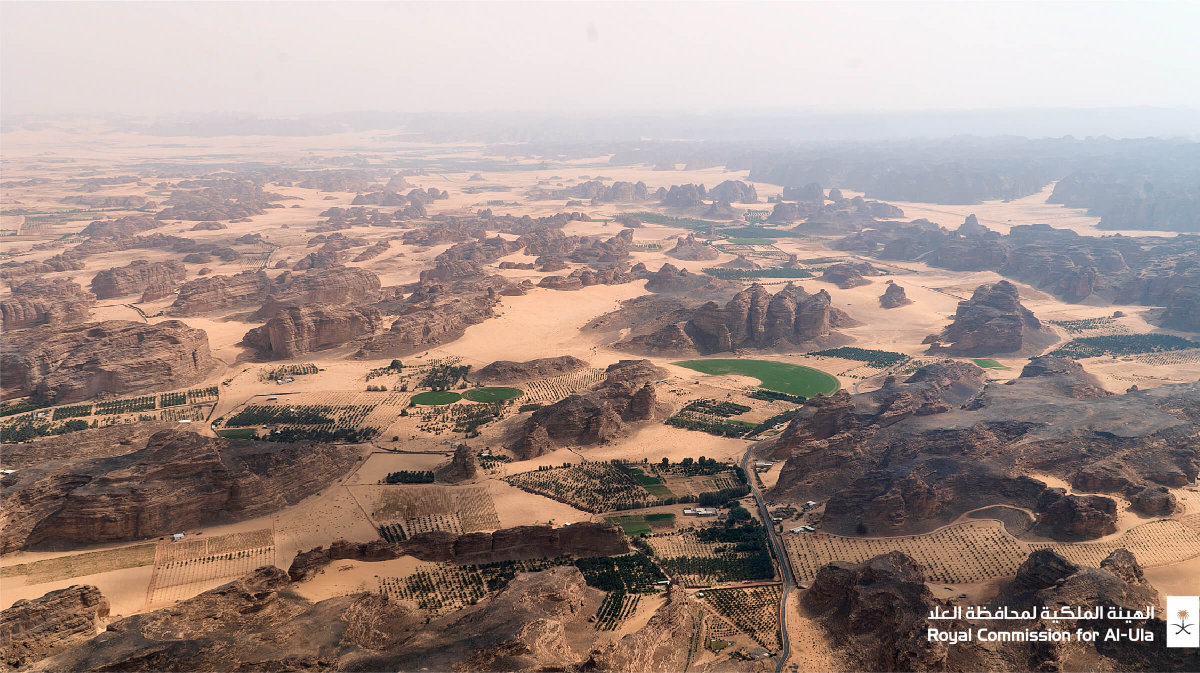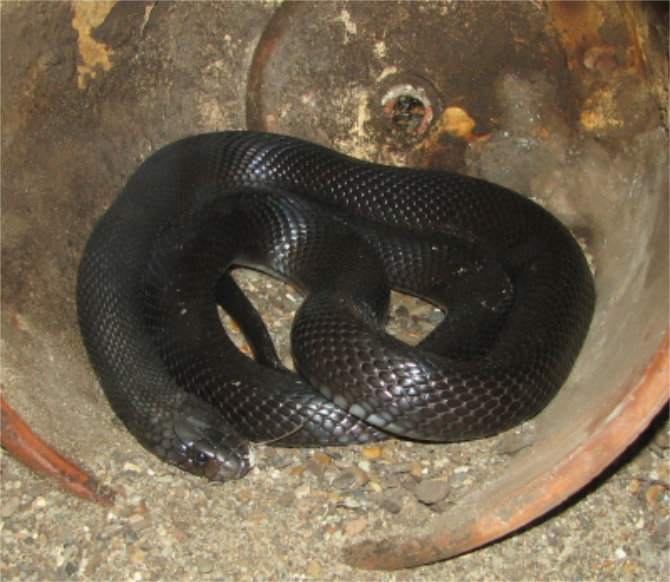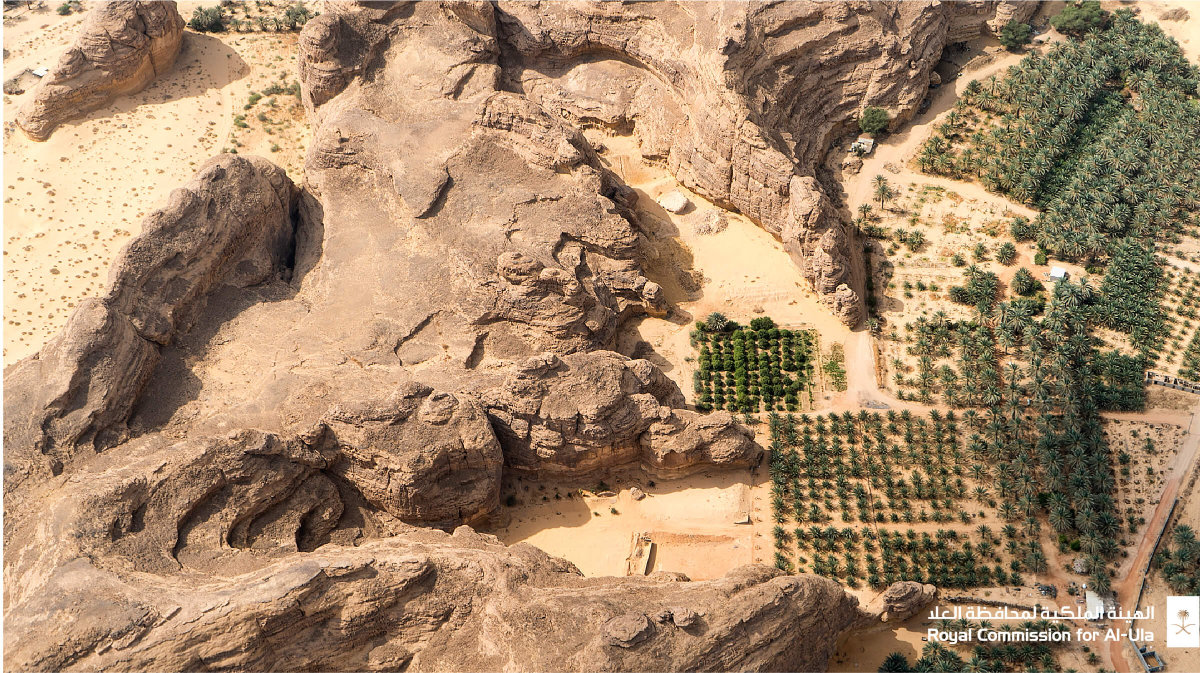How a new species of snake was discovered at the ancient AlUla oasis in Saudi Arabia
DHAHRAN: Earlier this year, scientists working in the ancient oasis in northwestern Saudi Arabia, in AlUla, were excited to discover a new species of snake. With its striking red color and beautiful black collar, the reptile is a perfect match for the camera against the sand and rocks of the Hejaz.
Laszlo Patko, who has been working for the past two years as the applied research leader of the Royal Commission for AlUla, in the inventory of the biodiversity of the region, was part of the team that discovered the new species and no charismatic poison.
“The snake species, Rhynchocalamus hejazicus, is not just new to the region or the country — it is new to science,” the Hungarian academic told Arab News.

The institutions involved in the research are the RCU, the University of Ha'il, the King Abdullah University of Science and Technology, and the Prince Mohammed bin Salman Royal Reserve Development Authority.
The institutions collaborated with experts from the Universidade do Porto in Portugal, the University of Suez in Egypt, the University of Aden in Yemen, and the Natural History Collective Ventures in Malaysia. – these are the Saudi government.
Together with his Saudi, Czech and Portuguese colleagues, Patko compiled the findings into a paper. In just a few months, it was published in a leading international life science journal Zoosystematics and Evolution.

Laszlo Patko, head of applied research at the Royal Commission for AlUla. (RCU)
It's very fast, because it's a high-quality, high-quality paper with great scientific results,” Patko said. “It was quickly accepted and released.
“For me, that was the real happiness to see that this is not only a great discovery for us, but for the whole international scientific community.”
The published paper describes the new species as “a small, secretive snake with a distinctive color and melanistic appearance. The new species occurs in the northwestern Hejaz region of the Kingdom of Saudi Arabia and fills a large part of the range of the species in the Arabian Peninsula.
Stephen Browne, vice-president of wildlife and natural heritage at the RCU, said the discovery of this new species shows the importance of the State's conservation efforts.
“This vision is not just about cataloging new genres; it represents our continued commitment to protecting AlUla's rich and diverse ecosystem,” Browne said in a statement. “It is a symbol of our commitment to protecting this unique oasis. .
This section contains related reference points, placed in (Content)
A spokesperson for the RCU agreed that there was still much to be learned about the animals' abilities in the desert.
“This research is very important for understanding the dynamics of the environment in the region and the adaptation strategies for the wildlife in the desert, enhancing the reputation of AlUla as a sanctuary for the historical and natural treasures,” a spokesperson said in a statement.
The project that led to the snake's discovery began with a regional wildlife census, which began in November 2022, focusing on documenting the area's biodiversity.

With its striking red color and beautiful black collar, the reptile is a perfect match for the camera against the sand and rocks of the Hejaz. (RCU)
“We've never had such rigorous, scientific data collection before,” said Patko. “In this project, we 'accidentally' discovered this new species.
“It was an accident in the sense that we carefully examined all the natural reserves and identified all the species we found. We knew there were some species in the reserve, but we didn't know how many or where they were.”
Scientists had the idea that this area could be home to a new species. Between 2017 and 2022, geckos and snakes were observed in the area, but have not yet been collected and accurately described. The inventory provided the perfect opportunity to fill in those gaps.
In 2023, the team dedicated their time in the desert to observing animals based on morphology, including studying their external characteristics, coloration, scale patterns and DNA.
YOUKNOW?
• Around half of the territory of AlUla there are six nature reserves, including the Sharaan Nature Reserve, which covers 1,500 km2.
• These reserves are home to more than 1,580 animals from four species that have been successfully introduced to the region.
• Through habitat restoration, reintroduction of native species, and sustainable practices, AlUla aims to create a thriving and harmonious ecosystem.
“Obviously there's ad hoc viewing sometimes, but if you're on the field, you're working hard,” Patko said.
“You wake up in the desert, you sleep in the desert. You work in the desert with 10-15 different experts. Then that hard work pays off. It's a great way to get proof of why it's so important to be on the field.”
Using online databases, the team hoped to find species such as Walterinnesia aegyptia, also known as the desert cobra or black desert snake — native to nearby Khaybar, where camouflaged reptiles of the volcanic world.

The Walterinnesia aegyptia, also known as the desert cobra or black desert snake, is native to nearby Khaybar, where the colorful reptile stands out against the volcanic landscape. (Wikimedia Commons)
“Most of Harrat Khaybar is black and gray due to basalt and past volcanic activity,” Patko said. “The first people we saw were melanists – completely black snakes.”
In contrast, the newly discovered snake is bright red, evolved to blend into the red, orange and yellow colors characteristic of AlUla. “It was very clear that this was a new species,” Patko said.
Like many desert dwellers, snakes sleep at night. “During the day, because of the hot weather, Rhynchocalamus hejazicus can hide under rocks,” said Patko. “They go out at night to hunt invertebrates, small insects.”
The snake does not carry venom, although its mouth is small enough to attack its prey. It is also small. “It's a really cool snake; a small snake about 20-30 centimeters long, easy to handle,” said Patko.
According to Patko, there are fewer than 20 known snakes in AlUla, perhaps closer to 18. There is still much to learn about this latest addition to the reptile community.

With its striking red color and beautiful black collar, the reptile is a perfect match for the camera against the sand and rocks of the Hejaz. (RCU)
“We don't know much about their ecology because we only recently identified the species. So we can only guess,” Patko said.
“All the snakes we saw were solitary. Some snakes can congregate in one place for the winter, but not these.”
One thing Patko thinks is clear, however, is AlUla's importance as a thriving natural habitat, making conservation efforts in the area even more important for the benefit of science and biodiversity. .
“What is remarkable about this story is how the AlUla desert can hold these hidden gems,” he said.

